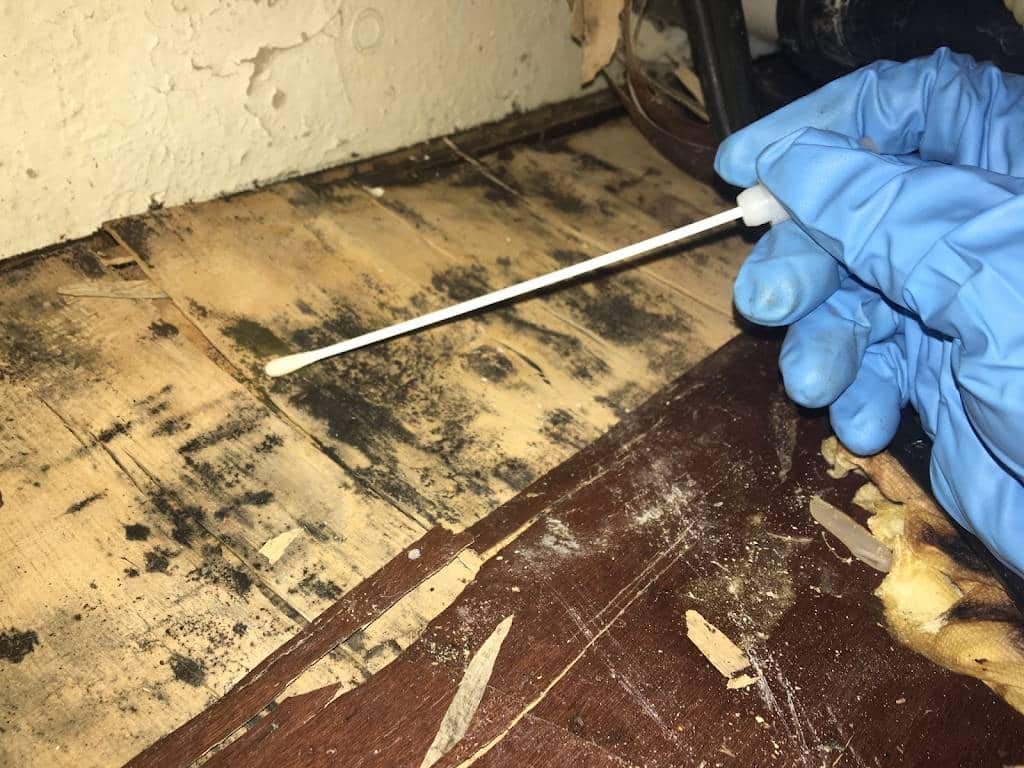Vital Actions After Mold Remediation
Vital Actions After Mold Remediation
Blog Article
Specialist Tips for Post Mold And Mildew Removal Success
In the realm of mold and mildew removal, effectively removing mold and mildew is only half the battle; the true challenge lies in preventing its reappearance. By sticking to professional ideas and finest techniques, individuals can guard their areas versus mold rebirth and preserve a healthy indoor setting.
Monitor Moisture Degrees Regularly
After finishing mold and mildew remediation treatments, keeping optimal moisture degrees is critical to protect against mold re-growth and make sure a healthy indoor atmosphere. High moisture levels above 60% create a helpful setting for mold to prosper, making normal keeping an eye on an aggressive measure to avoid any future mold issues.
Additionally, developing a routine timetable for humidity checks, particularly in high-risk areas such as kitchen areas, bathrooms, and basements, is a proactive strategy to mold and mildew avoidance. By regularly monitoring moisture degrees, residential or commercial property proprietors can efficiently mitigate the threat of mold and mildew reoccurrence and maintain a healthy interior atmosphere post-remediation.
Conduct Thorough Inspections Post-Remediation
Complying with the completion of mold and mildew removal treatments, it is imperative to carry out detailed assessments to verify the efficiency of the remediation process. These post-remediation inspections are important in guaranteeing that the mold and mildew issue has actually been successfully dealt with and that there is no reappearance or continuing to be mold and mildew growth. Inspections need to be executed by qualified experts who have know-how in identifying mold and examining indoor air top quality.
During these evaluations, different techniques such as aesthetic assessments, air sampling, and surface tasting might be utilized to thoroughly examine the remediated locations. Aesthetic analyses include a comprehensive examination of the properties to look for any type of noticeable indicators of mold and mildew development or water damages. Air sampling assists in figuring out the airborne mold and mildew spore levels, while surface tasting can discover mold fragments on surfaces.
Implement Proper Ventilation Methods
After ensuring the efficiency of the mold and mildew removal process via thorough examinations, the next critical step is to concentrate on applying proper air flow approaches. Sufficient air flow is important in protecting against mold reoccurrence by managing dampness levels and promoting air circulation.
Proper air flow not only help in protecting against mold and mildew development yet additionally contributes to the total health and convenience of occupants. By making certain have a peek here appropriate ventilation throughout the building, you can lower the threat of mold and mildew regrowth and develop a healthier living setting.

Usage Mold-Resistant Materials for Services
To boost the lasting efficiency of mold and mildew remediation efforts, integrating mold-resistant products for repairs is important in minimizing the danger of future mold growth. Mold-resistant materials are made to withstand wetness and prevent mold development, making them an essential selection for locations vulnerable to wetness and moisture. When fixing locations influenced by mold and mildew, using products such as mold-resistant drywall, mold-resistant paints, and mold-resistant caulking can assist avoid mold and mildew reappearance.
Mold-resistant drywall is a superb choice to traditional drywall in locations article source like basements and washrooms where moisture levels are greater. When subjected to damp problems, this kind of drywall has a special coating that stands up to mold growth also. Additionally, utilizing mold-resistant paints containing antimicrobial representatives can better hinder mold growth on ceilings and walls.
In areas where wetness prevails, such as shower rooms and kitchens, making use of mold-resistant caulking around windows, sinks, and tubs can aid secure out water and stop mold from taking hold in cracks and holes. By investing in these mold-resistant products during repair work post-remediation, you can dramatically reduce the chance of future mold and mildew problems and maintain a healthier interior atmosphere.
Maintain Sanitation and Address Water Issues
After mold remediation, it is vital to keep a clean setting to avoid the regrowth of mold. Leaks, water intrusion, or high moisture degrees can develop the perfect breeding ground for mold and mildew, so it is critical to deal with any kind of water-related problems right away.
To preserve sanitation, consider utilizing HEPA filters in vacuums and air cleansers to catch mold and mildew spores and prevent their blood circulation airborne. Ensuring proper air flow in locations prone to moisture accumulation, such as kitchens and restrooms, can aid keep moisture levels in check. By staying attentive concerning sanitation and resolving water problems quickly, you can properly prevent mold reinfestation and preserve a healthy and balanced interior environment.
Verdict

In the world of mold remediation, effectively eliminating mold and mildew is just half the battle; the real obstacle exists in preventing its reappearance. After completing mold and mildew remediation treatments, maintaining optimal moisture levels is crucial to stop mold and mildew re-growth and ensure a healthy and balanced interior environment. High moisture degrees above 60% create a favorable environment for mold to grow, making normal keeping track of an aggressive procedure to avoid any future mold and mildew concerns.
To boost the long-term efficiency of mold remediation efforts, including mold-resistant materials for repair work is crucial in reducing the risk of future mold development. After mold remediation, it is vital to keep a clean setting to stop the regrowth of mold.
Report this page